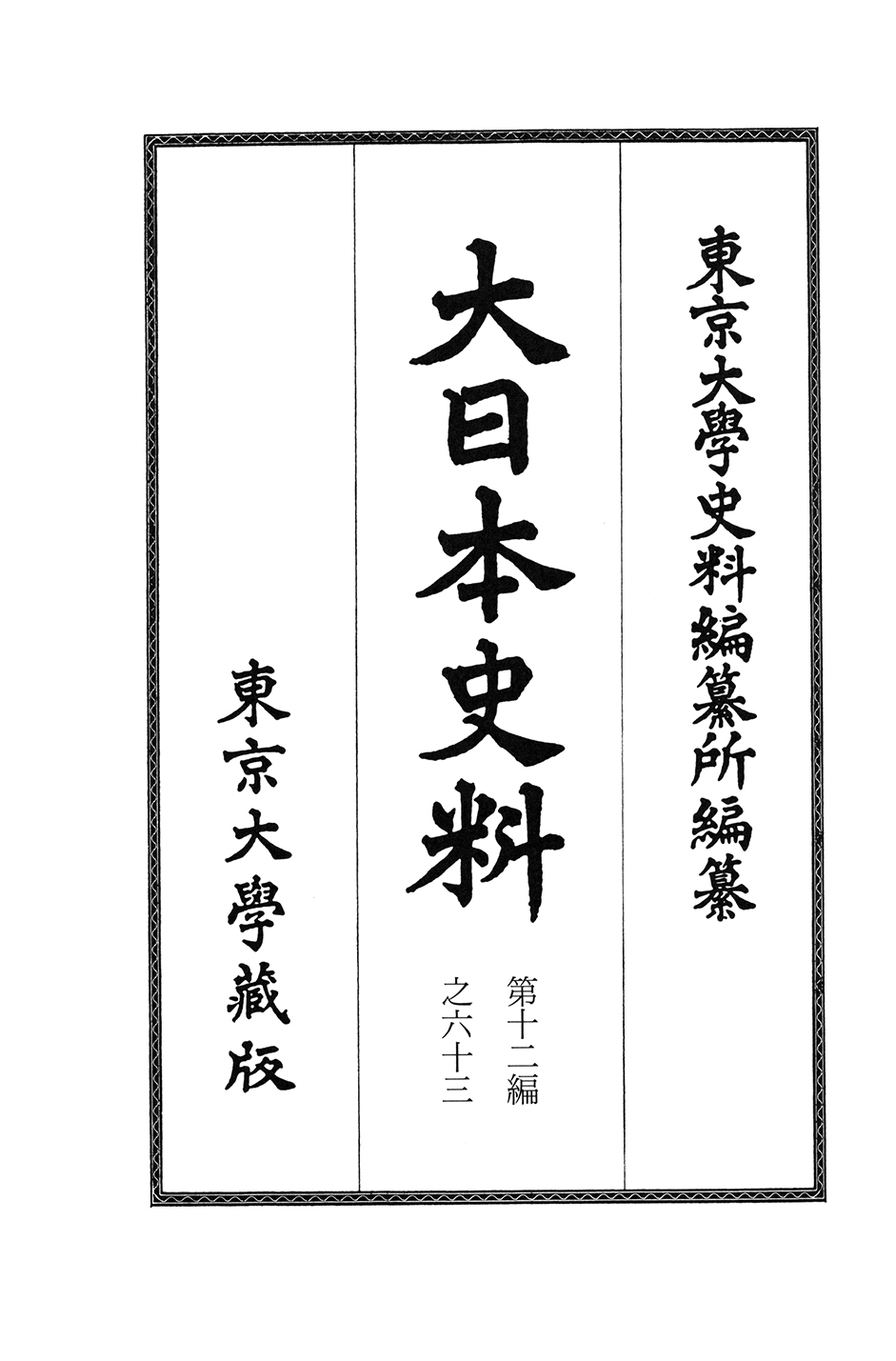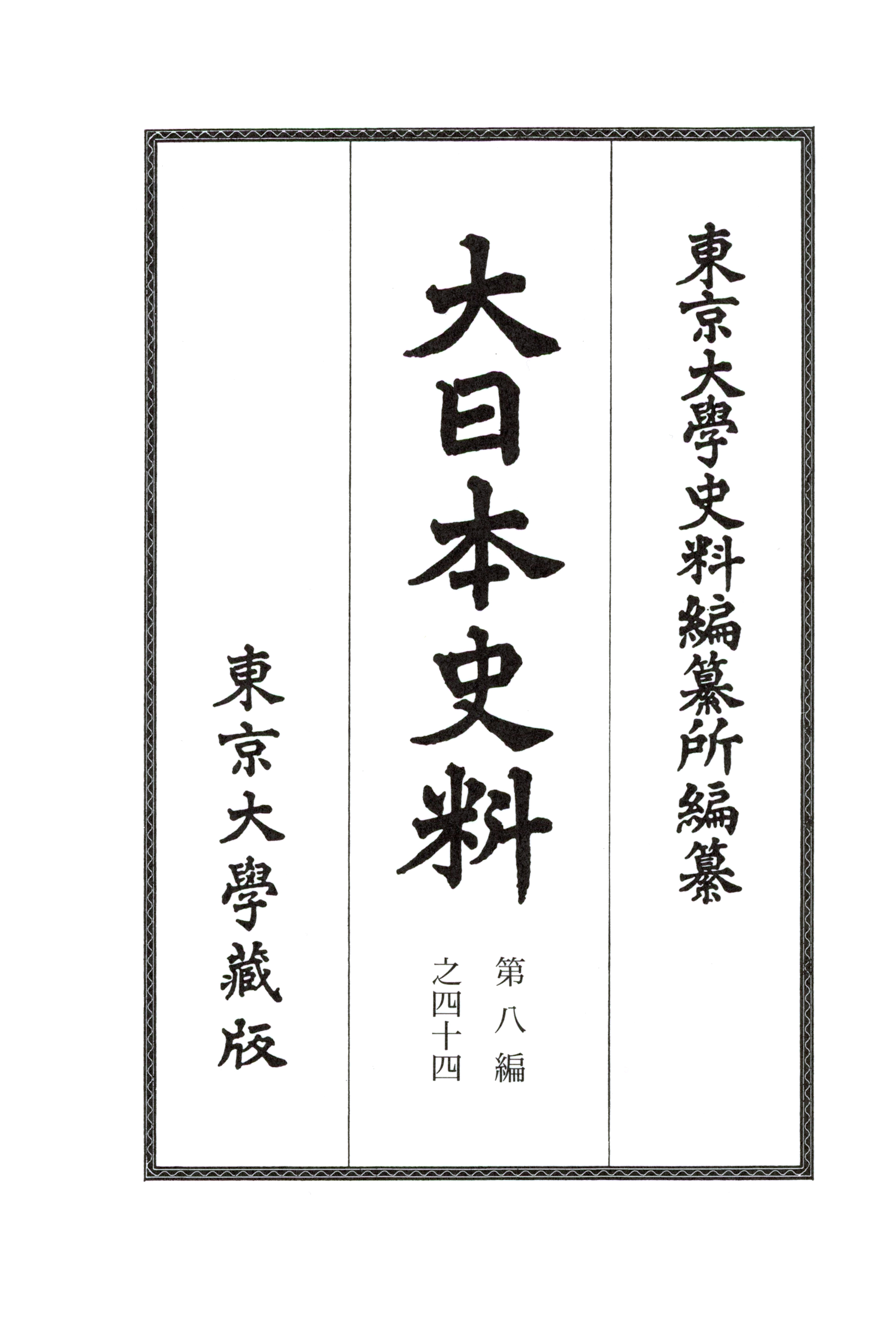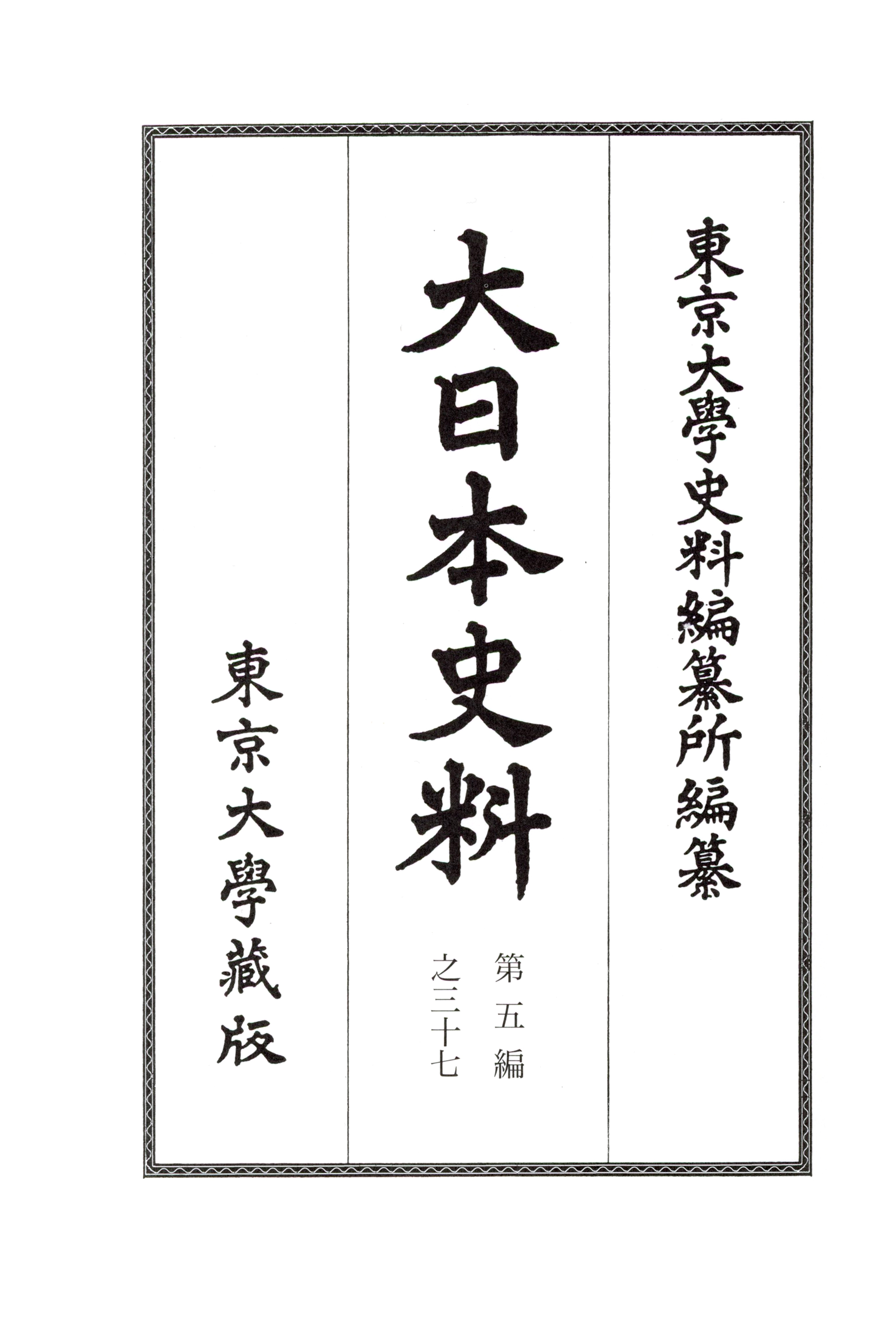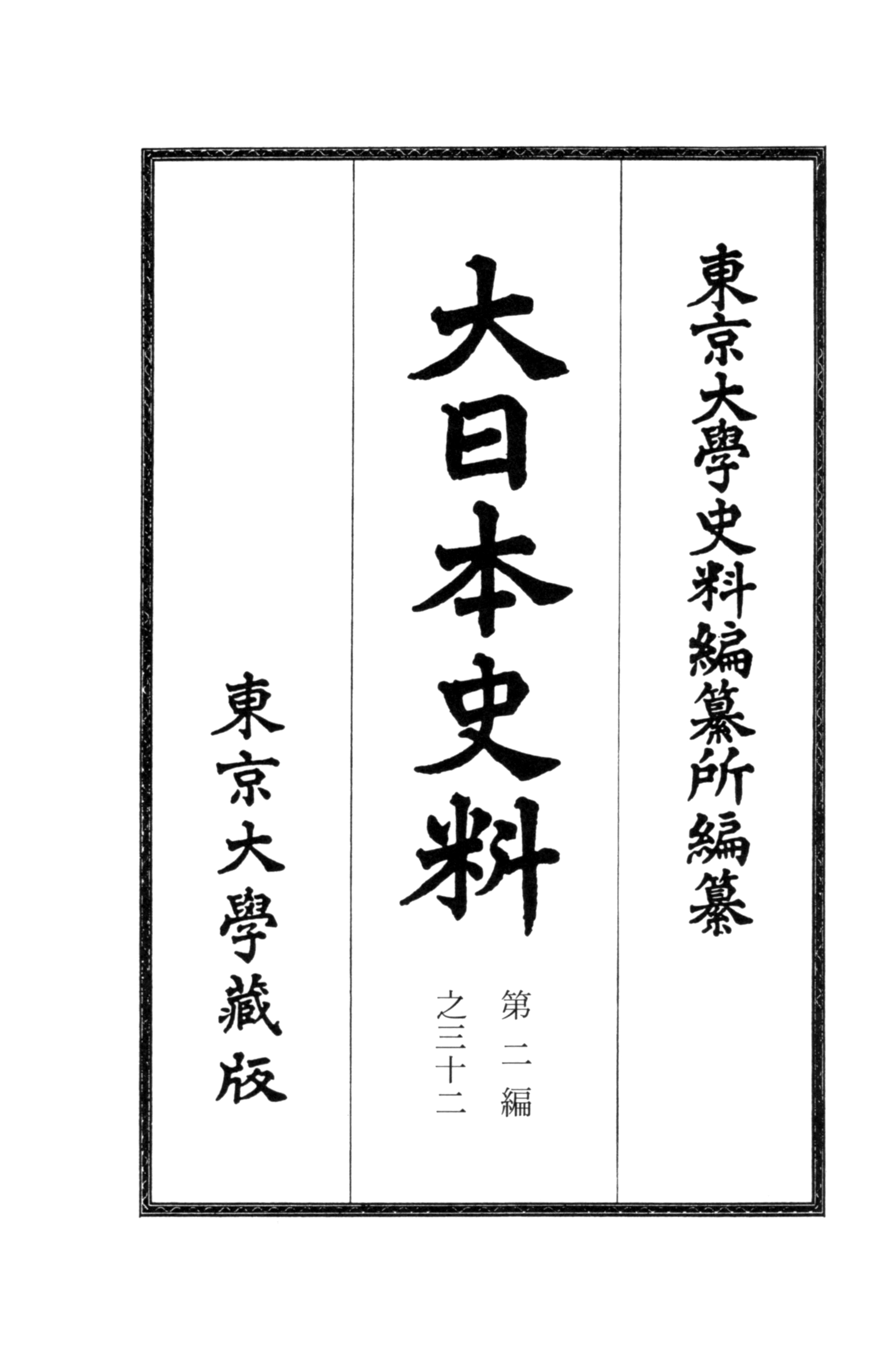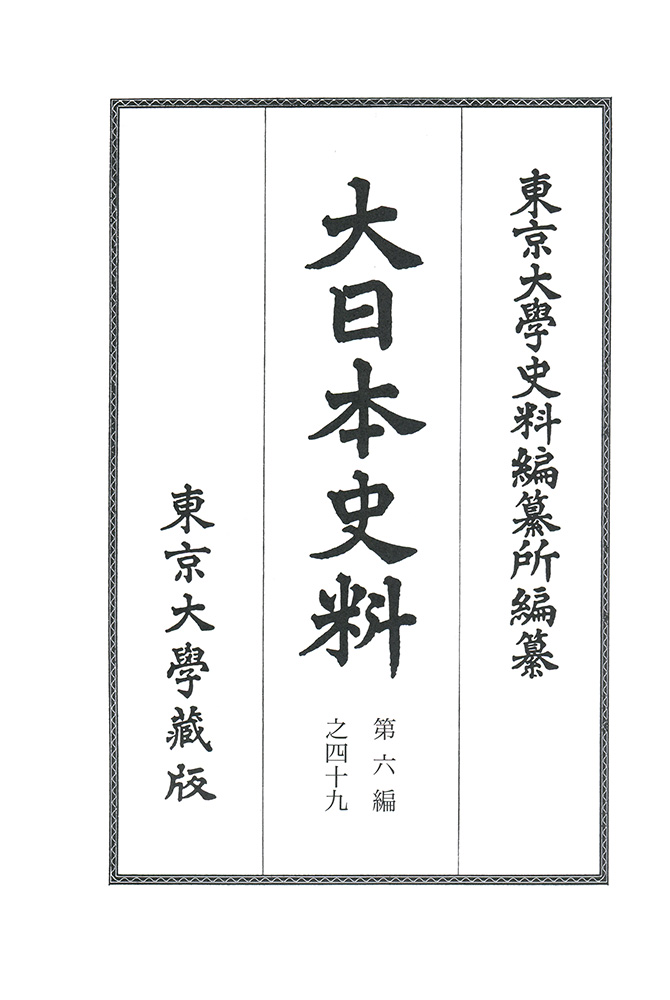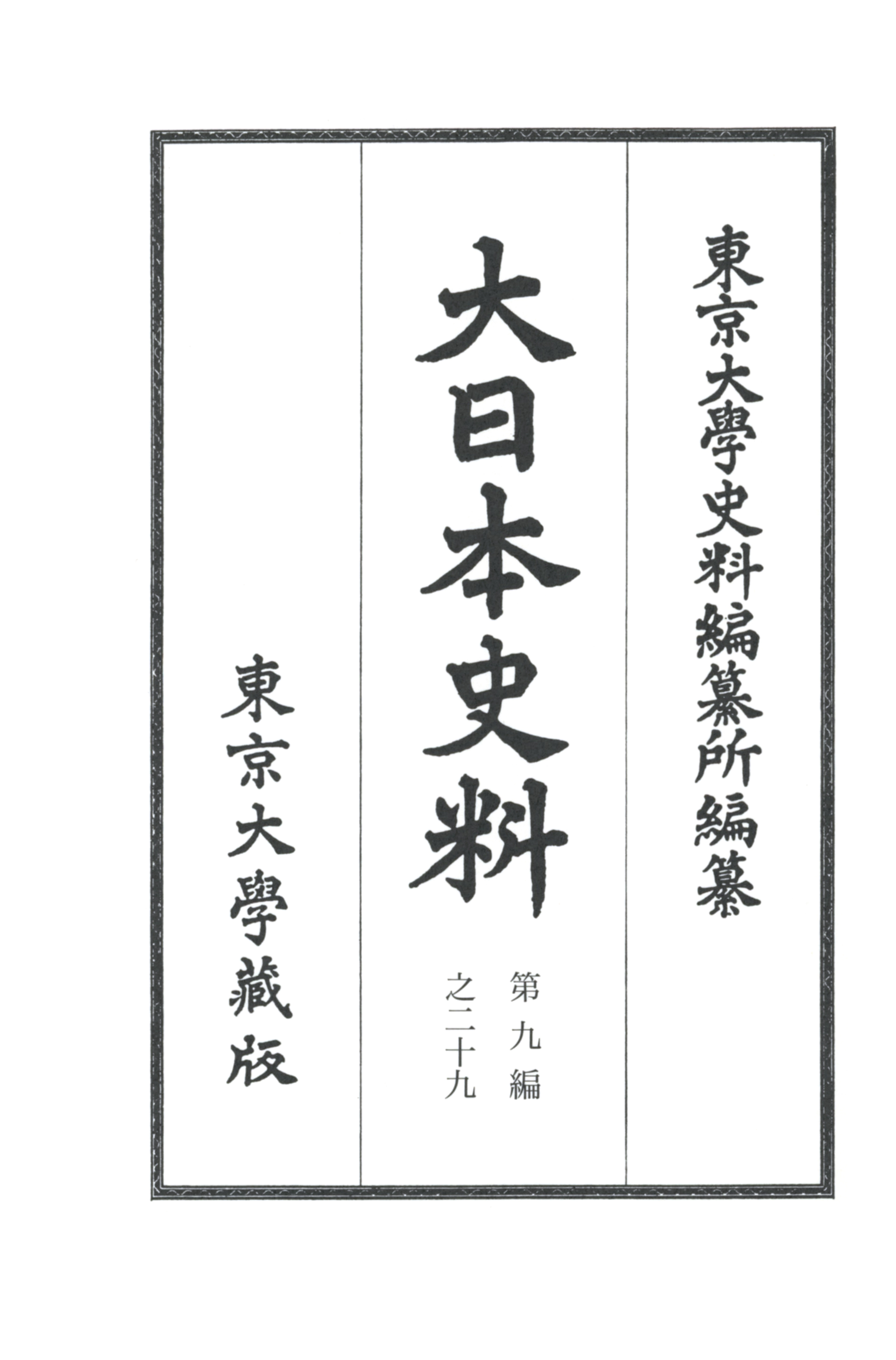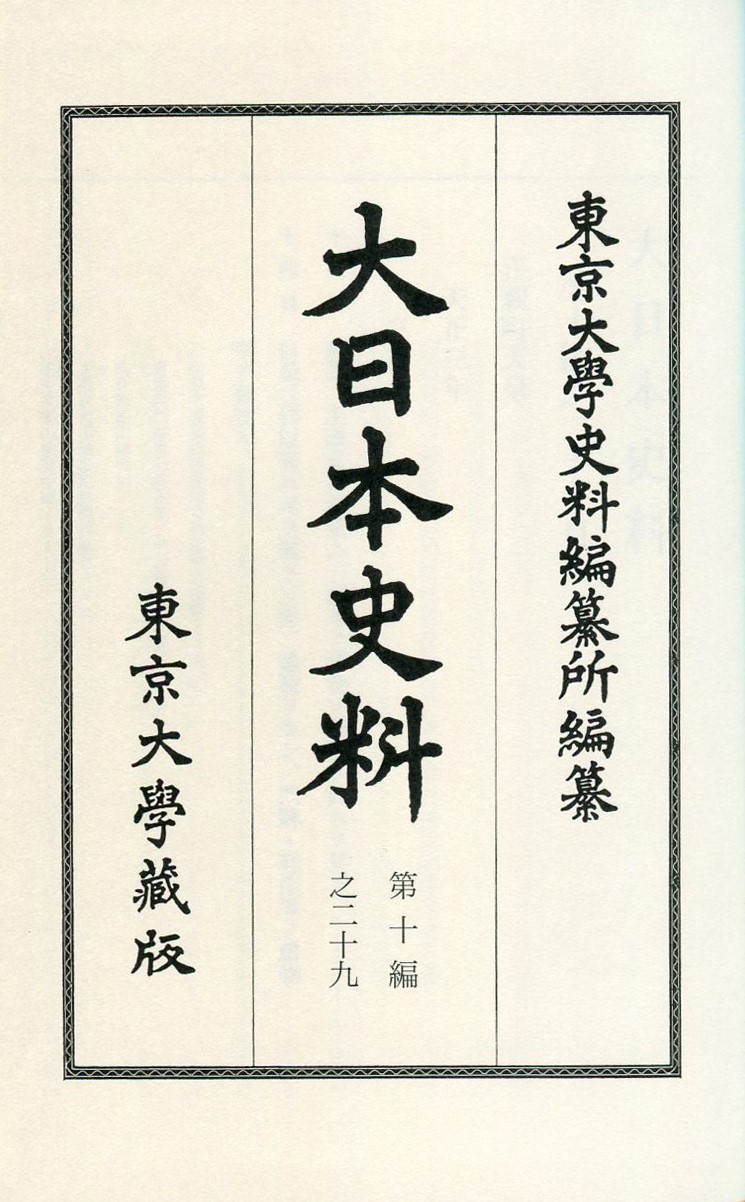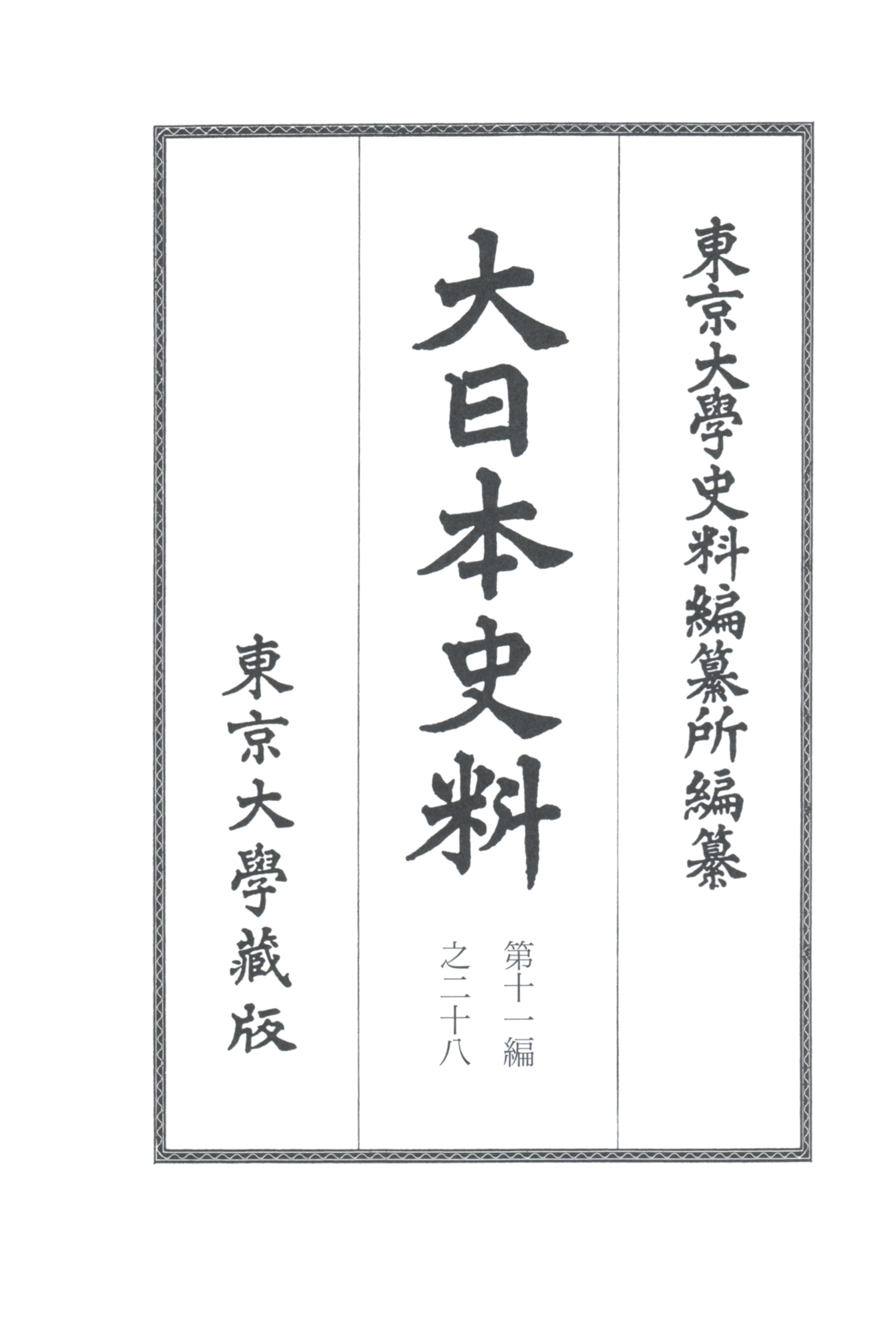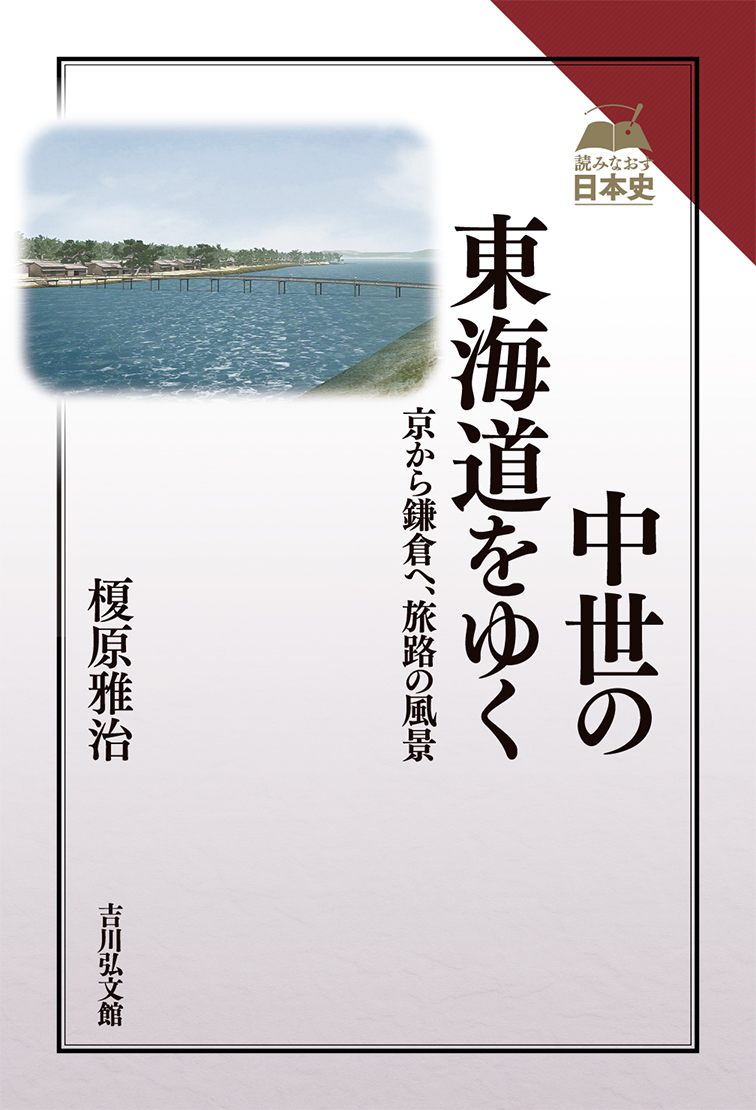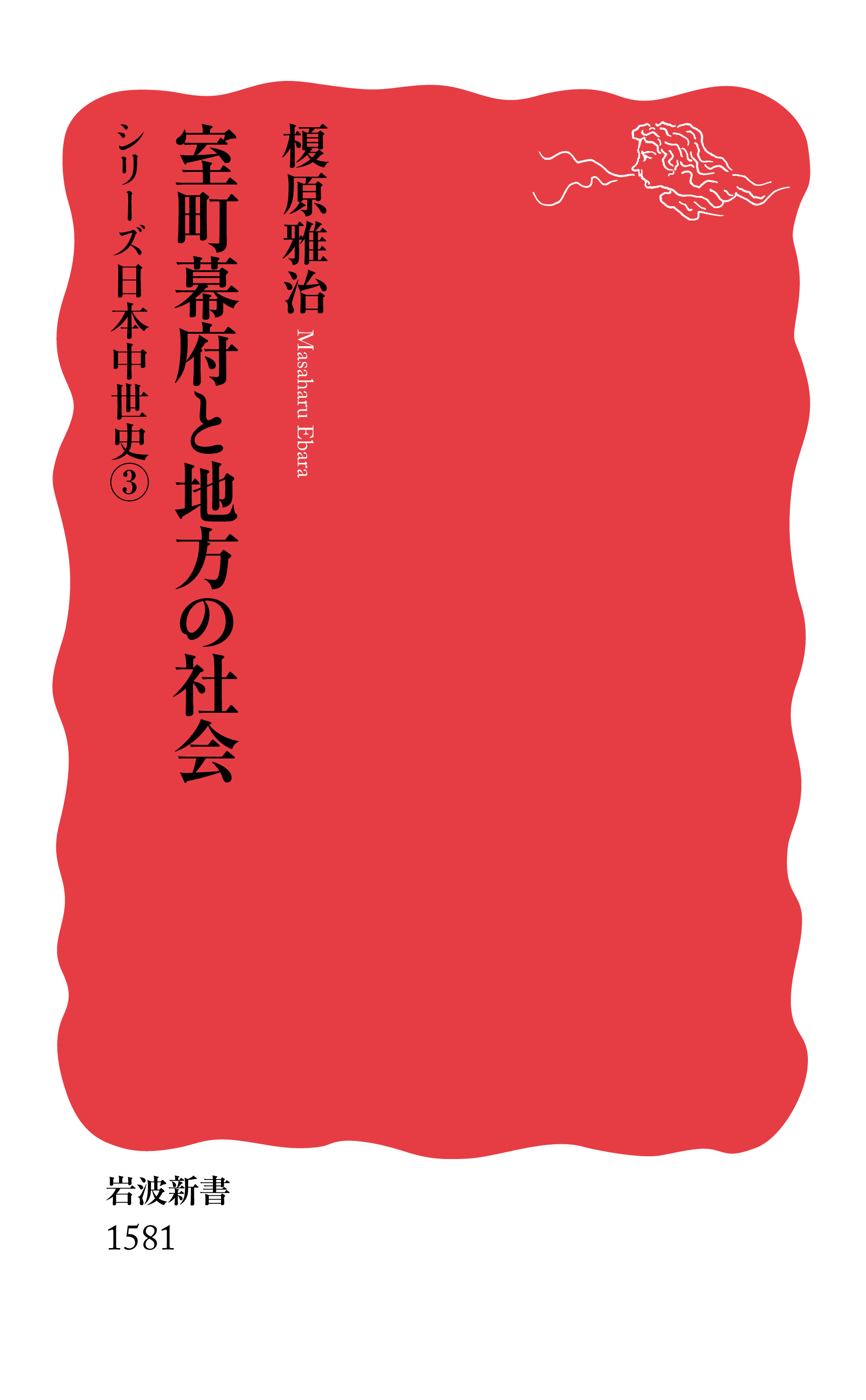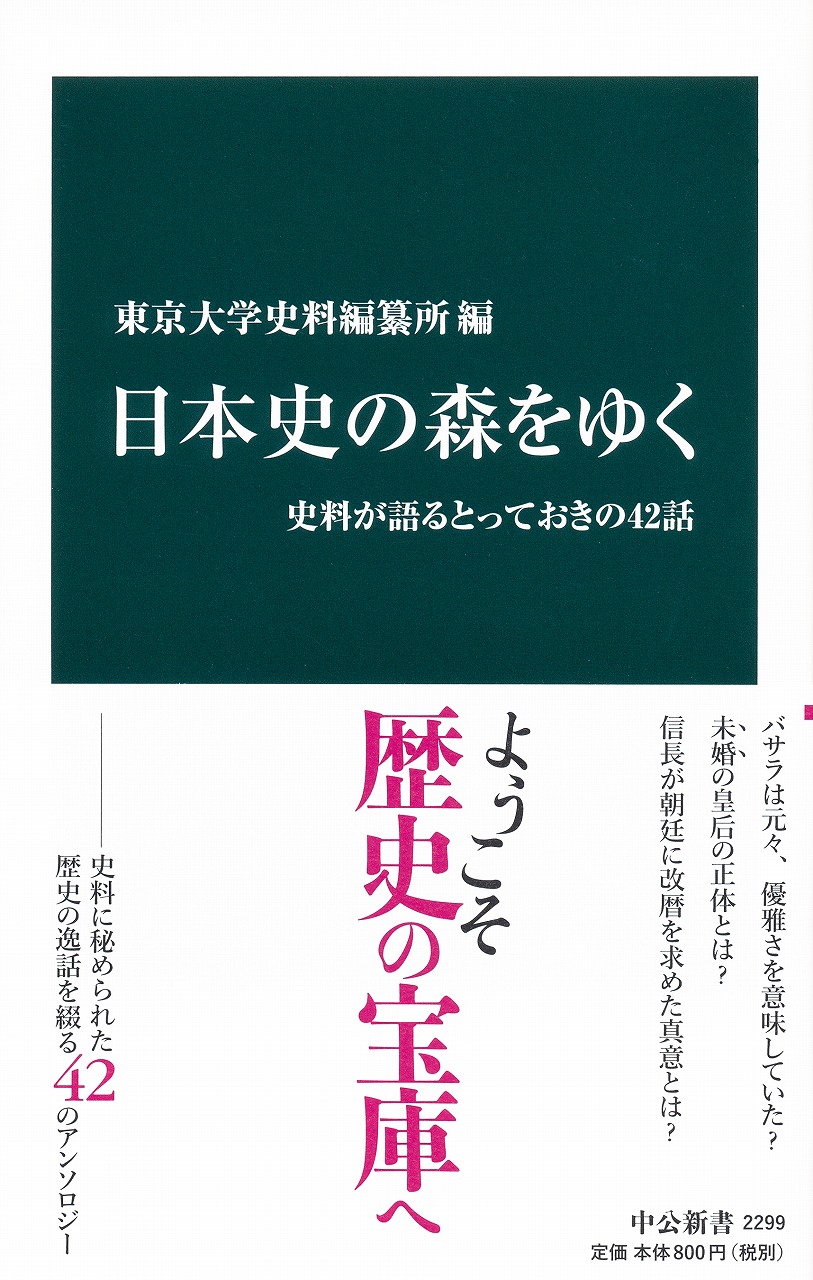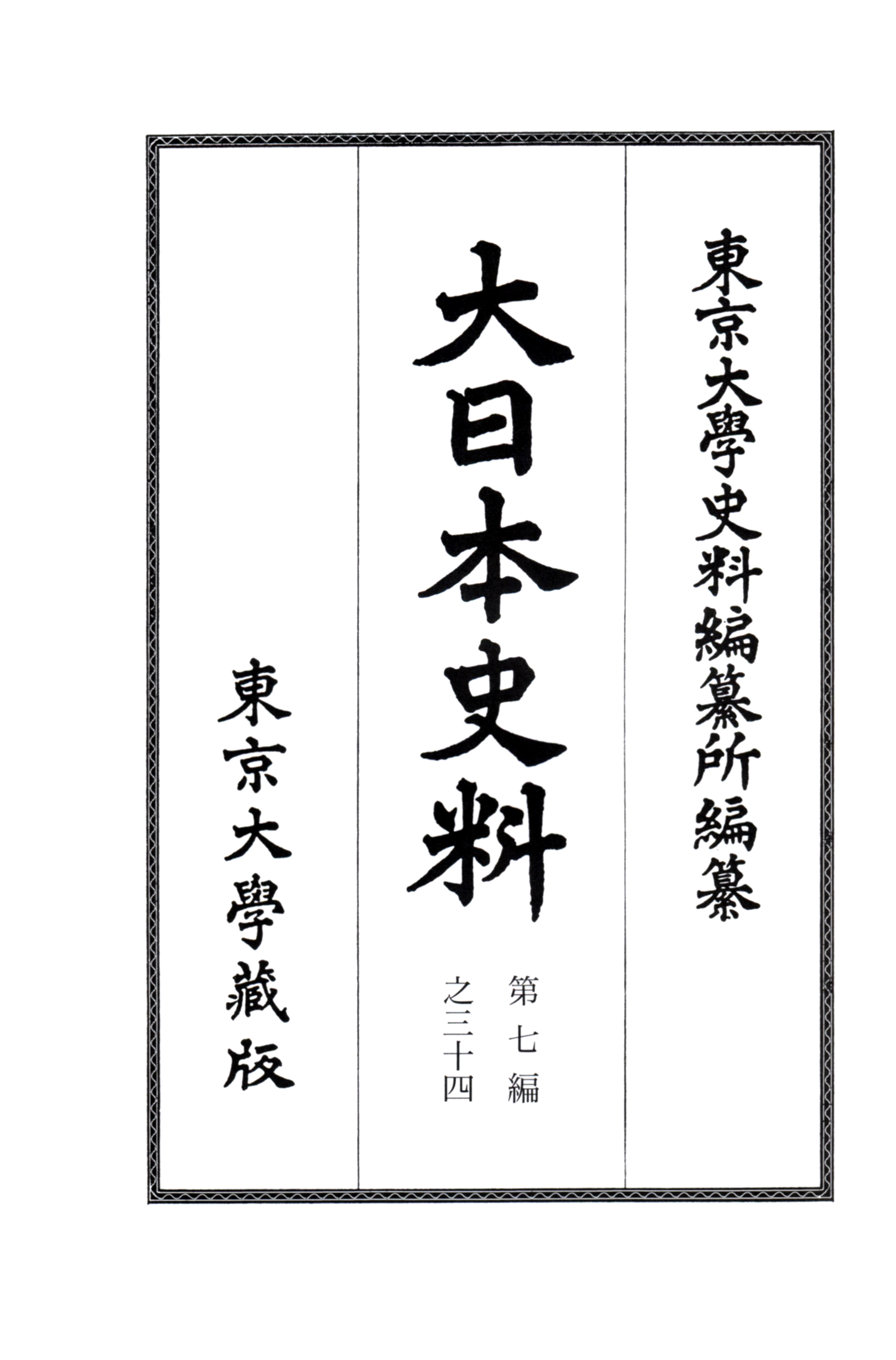
Title
Dai-Nihon Shiryo: Dai 7 no 34 (Chronological Source Books of Japanese History: Volume 7, Number 34)
Size
426 pages, A5 format
Language
Japanese
Released
April 19, 2019
ISBN
978-4-13-090334-9
Published by
University of Tokyo Press
Book Info
See Book Availability at Library
Japanese Page
Chronological Source Books of Japanese History is a series of collections of historical sources that bring together all manner of written historical sources, including official documents issued by the imperial court, shogunate, and daimyō, documents prepared by the aristocracy and warriors regarding their assets, documents of temples and shrines concerning their religious events and assets, and diaries written by people belonging to various social classes, and sources related to a particular “event” are grouped together and arranged in chronological order. The “events” covered are not just major political incidents and include all kinds of events, major and minor, such as everyday court rites and shrine festivals, outings by emperors and shoguns, and so on. The period from the mid-Heian period to the early Edo period has been divided into twelve volumes, and books in each volume are currently being published.
Volume 7 covers the period from the unification of the Northern and Southern courts (1392) to the outbreak of the Ōnin War (1467), and this book, Number 34, covers the third to seventh months of 1419 (Ōei 26). The most important event dealt with in this book is the Ōei invasion, which occurred on the 20th of the sixth month. This was an attack on the island of Tsushima by Choson troops, who had been suffering from the depredations of so-called Wako, Japanese pirates. There are few Japanese sources dealing with the incident itself, and mainly Korean and Chinese sources have been used, including Veritable Records of the Chosŏn Dynasty, Veritable Records of the Ming, and biographies of Korean soldiers who took part in the fighting. The course of events covered in this book can be summarized as follows.
In the first half of the fifth month, a large fleet of Japanese pirates attacked Korea’s Ch’ungch’ŏng and Hwanghae provinces and then showed signs of heading towards the Liaodong Peninsula in China. On seeing this, the Chosŏn government, thinking that there was no fighting manpower on Tsushima, drew up plans to attack the island, take the women and children captive, and intercept the pirate fleet on its return from Liaodong. While informing the shogunal deputy in Kyushu and the Sō family who governed Tsushima that it had no intention of attacking the Japanese mainland or the Sō family, the Chosŏn government was detaining Japanese in Korea.
In the middle of the sixth month, the pirates attacked Wanghaiguo in Liaodong and were soundly defeated by Ming forces, but the Chosŏn government, unaware of this, attacked Tsushima as planned on the 20th of the month. However, a surprisingly large number of fighting men had remained on Tsushima, and the Korean troops were forced to fight against heavy odds for several days. There were also signs of an approaching typhoon, and the Koreans withdrew on the 3rd of the seventh month. The following day, the pirates returning from Liaodong once again attacked Ch’ungch’ŏng province, and there was discussion within the Chosŏn government about launching another attack. But on the 12th it became clear that the pirates were fleeing after having been heavily defeated by Ming forces, and plans for a second attack were cancelled. On the 17th, the Chosŏn government urged the Sō family to submit to Korea together with all the islanders, and it also conferred with court officials about the merits of launching the second attack on Tsushima. Arguments were put forward for and against this, and in the end it was decided to give the Korean populace time to recover and to postpone the second attack until spring of the following year.
These moves on the part of Choson government were made in response to the moves of the pirates who had attacked Korea and Liaodong. News that pirates had attacked Ch’ungch’ŏng province in the first part of the fifth month was immediately conveyed by Choson government to Ming China, and this led to the successful defence at Wanghaiguo by Ming forces. It is also evident from the biographies of Korean soldiers that Tsushima sought assistance from Iki and Kamimatsuura. These are all facts that have been brought to light for the first time in this book.
Within Japan, rumours were circulating in Kyoto on the 23rd of the fifth month that “the Great Tang Kingdom, Southern Barbarians, and Koryŏ (Korea)” were going to attack Japan. In the middle of the sixth month unusual phenomena were being reported by Izumo Shrine and many other shrines, and the shogunate ordered temples to perform special prayers. In addition, the shogun Ashikaga Yoshimochi petitioned the retired emperor Go-Komatsu for permission to revive Kinenkoku-Hobei ceremony, which is special prayers for an abundant harvest, which had been suspended for seventy years, and it was decided to perform these prayers. It can be seen how, lacking accurate information, people were becoming terrified of unseen enemies.
(Written by EBARA Masaharu, Professor, Historiographical Institute / 2019)



 Find a book
Find a book



